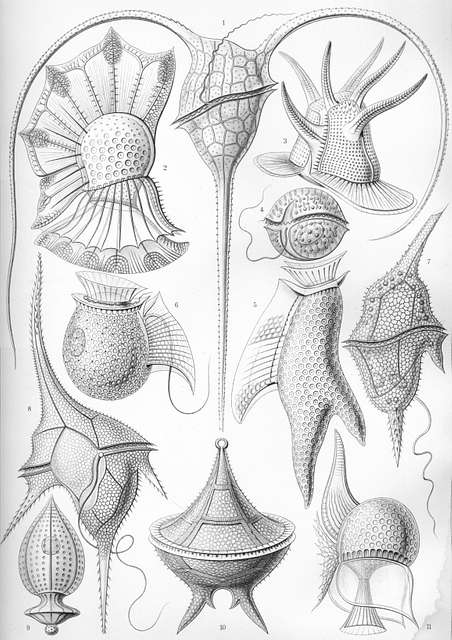Dinoflagellates are a type of protist that live in a number of different ecosystems, including ponds, lakes, oceans, and so forth. These creatures can seem wacky and insignificant, some people not even knowing what they are, but they are responsible for a number of different well-known phenomena in the ocean such as red tides, bioluminescent beaches, and they even form the symbiotic relationship with coral that gives them their color. Little do people know though, just how much more there is to dinoflagellates that make them so special.
Two Flagella

To start off, the name dinoflagellate is broken up into dinos which means ‘whirly’, and flagellum which means ‘a whip’ referring to the long flagella that allows them to move about. They are named this way because of the unusual pattern in which they move; spinning and whipping around rather than in a linear fashion. Dinoflagellates have a unique body structure which involves two different flagella. The main flagella occur on the bottom, known as the longitudinal flagella. This propels the organism forward. The other flagella are located in a grove at the equator of the organism, and this one helps them in forward movement as well as spin. Personally, I like to also think that they are named that way because some dinoflagellates look like a brachiosaurus.
Zooxanthellae
While many people have yet to learn about dinoflagellates directly, they may have heard that coral reefs aren’t just made up of one organism but a symbiotic relationship between the coral, and the algae that are housed within the coral, known as zooxanthellae. Some of the main types of algae that live within the coral in these reefs are different types of dinoflagellates such as those in the Symbiodiniaceae family. They live withing the coral’s tissue, preforming photosynthesis and providing energy.
Bioluminescence
Many have heard about the otherworldly beaches in foreign countries that have strange glowing properties due to organisms in the water that contain bioluminescence. With all the multifaceted aspects of these organisms, it’s not hard anymore to guess the fact that Noctiluca scintillans, a species of dinoflagellate, is responsible for such an occurrence. They contain a type of pigment called luciferin which binds to the enzyme luciferase, causing a reaction that results in the production of light.
Odd Nuclei
If this organism wasn’t interesting enough, they also have their own name termed for their odd nucleus known as a dinokaryon. This dinokaryon stands out for many reasons including the fact that in some species, it can carry up to 100-200 picograms of DNA content per cell. For reference, the average human carries about 3 picograms. That is a lot of DNA being carried around in one cell.
Stealing Chloroplasts
Another interesting aspect of dinoflagellates is that some species are known for participating in a common phenomenon that protists perform, known as kleptoplasty. In an act of endosymbiosis, these dinoflagellates will swallow nearby algae and take in their chloroplasts while still leaving them fully intact. This way they can temporarily use the chloroplasts of photosynthetic organisms and reap the benefit.
Conclusion
The more you learn about these organisms, the more you realize just how influential these beings are. They are small and so far, not a whole lot is known about them, and yet they influence our lives in so many ways that we don’t even think about. They are responsible for a sizable amount of the worlds oxygen levels while also being responsible for phenomena like harmful algae blooms that keep many off the beaches at certain times of the year. They have complex biological structures that have confused scientists for years. Overall, there is much more to these creatures that what meets the eye.